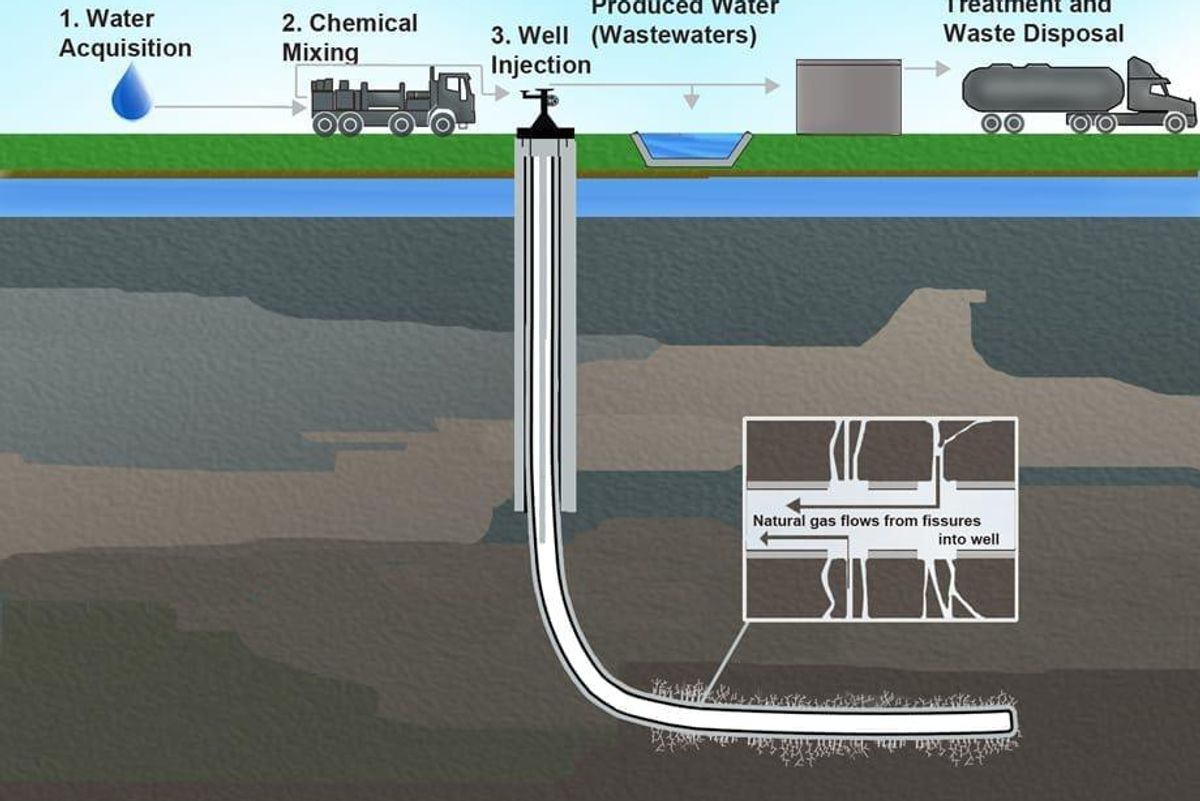
The new fracking rules unveiled by the US federal government last week have already caused quite a stir. Two industry groups reportedly filed a lawsuit within minutes of the announcement.
The new fracking rules unveiled by the US federal government last week have already caused quite a stir, with two industry groups reportedly filing a lawsuit within minutes of the announcement.
Specifically, the Independent Petroleum Association of America and the Western Energy Alliance filed a petition against the Bureau of Land Management (BLM) in Wyoming federal court on Friday morning. The groups claim the rules impose “unnecessary burdens that either duplicate state law requirements or improperly curtail the primary jurisdiction of state governments, and because the regulations are not properly tailored to achieve a legitimate government purpose.”
The rules, which were created by the BLM, are set to take effect in 90 days and have been in the works since 2010. They will apply to oil and gas drilling on federal and Native American land. The BLM developed the new rules “with the intention of improving public awareness and strengthening oversight of hydraulic fracturing operations without introducing unnecessary new procedures or delays in the process of developing oil and gas resources on public and Indian lands.”
A look at the dangers of fracking
It’s no surprise the news was met with some opposition. Indeed, environmental groups have been disputing the controversial fracking process for years and have said it poses health risks.
Looking at what the process involves, it’s not hard to see why. Fracking entails pumping water, sand and chemicals into rock at high pressures to force open existing fissures; oil or gas is then extracted, along with the water and chemicals used. It has been associated with an increase in earthquakes throughout the mid-US, according to report put out by the USGS last month.
Another USGS article on induced earthquakes notes that from 2010 to 2012 there were over 300 earthquakes with a magnitude above 3 Central and Eastern US, all of which coincided with the injection of wasterwater in deep disposal wells in Colorado, Texas, Arkansas, Oklahoma and Ohio. Not surprisingly, most of the states listed also appear on the BLM’s list of acres producing oil and gas on federal land.
What the rules mean for gas companies
The US Department of the Interior estimates that adhering to the new rules will cost $11,400 per drilling operation, which is less than 1 percent of the cost of drilling a well. However, a study put together by the American Petroleum Institute states that “the total costs associated with this rule could range from $30 million per year to $2.7 billion per year.”
Still, it seems the biggest concern surrounding the new rules — and what sparked the lawsuit — is that some rules are duplicates of those already in place and will add unnecessary costs. On that note, John Robitaille, vice president of the Petroleum Association of Wyoming, told CNBC, “the thing that we are most concerned about is the rule that has come out is essentially redundant and duplicative of the rules that are already being implemented by the the Wyoming Oil and Gas Conservation Commission.”
Wally Grangmeister, vice president and director of communications for the New Mexico Oil and Gas Association, also spoke with CNBC about the issue and agreed that layering federal rules over state regulations could add a lot to cost and “in an environment where the price of oil is in the mid $40s and natural gas is below $3, every dollar counts relative to what you’re producing.”
On the bright side, some companies that are part of the Western Energy Alliance operate in states that already have certain regulations in place, and they should find it easier to implement the new rules. Those firms include Encana (TSX:ECA,NYSE:ECA), Baytex Energy (TSX:BTE,NYSE:BTE), Crescent Point Energy (TSX:CPG) and Carbon Natural Gas Company (OTCMKTS:CRBO).
It will be interesting to see how the situation plays out. At the moment, however, a recent statement to Forbes from US Senator John Barrasso of Wyoming likely sums up many industry participants’ views. He said, ”the Bureau of Land Management’s rule is a solution looking for a problem. For years, Wyoming and other western states have enforced the country’s most aggressive hydraulic fracturing regulations — regulations which also apply to federal lands within their borders.”
Securities Disclosure: I, Kristen Moran, hold no direct investment interest in any company mentioned in this article.





